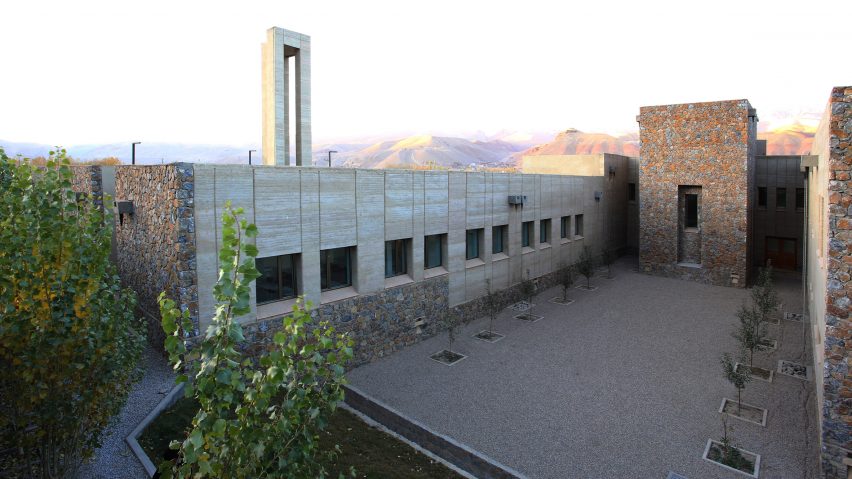This hospital nestled in a valley in Afghanistan's central highlands features a sequence of courtyards intended to "foster healing and well-being" that become increasingly more private within the complex.
Bamyan Provincial Hospital is part of an urban masterplan for the town of Bamyan, which is situated in an area called Village Mullah Ghulam on the route of the historic Silk Road.
The complex designed by Arcop occupies over two and a half hectares of land on a gently sloping site bordered on the northern and eastern edges by the Bamyan River, and on the southern edge by an arid mountain ridge.
Arcop's proposal for the hospital was informed by the architectural heritage of its setting, and seeks to reinterpret the ideas and construction methods traditionally used to build homes and villages in the region.
"Overall, our attempt is to take a 'biophilic' approach to design," the architects explained, "where through natural light and ventilation, views of mountains and gardens and access to outdoor courts, an architecture is created which fosters healing and well-being."
The layout of the hospital is based around a series of courtyards that progress from the most public uses close to the entrance, to completely private spaces used by patients for treatment or relaxation.
A main street extending along the western edge of the site provides access to a large arrival courtyard, from which patients and visitors can enter either a parking area, accident and emergency court, or the main entrance court situated next to the reception.
The landscaping of the courtyards references the surrounding nature, with the strong contrast between the stark mountains and lush valleys echoed in the balance between the planting and hardscaping.
In addition to respecting the region's architectural heritage, the building's design and material palette responds to the threat posed by earthquakes. Its use of simple forms and construction materials also considers the limitations of an unskilled local workforce.
External walls are formed of stabilised rammed earth and reinforced cement concrete, erected using techniques adapted from the traditional vernacular building methods.
Stone and brick add texture and tonal interest to the elevations, while plenty of traditional decorative details are incorporated into the interior.
The plan's orientation ensures the interior spaces benefit from optimal exposure to sunlight in winter, as well as allowing natural light to illuminate the corridors and wards.
A lack of available infrastructure also necessitated the implementation of sustainable design practices, including natural lighting and ventilation, thermal mass, double glazing, insulation, grey-water recycling and solar power to provide electricity.
Photography is by Irfan Naqi, Mahboob Khan, Yawar Jilani and Abdullah Omar Asghar Khan.
Project credits:
Architect firm: Arcop
Lead architects: Yawar Jilani & Mahboob Khan

